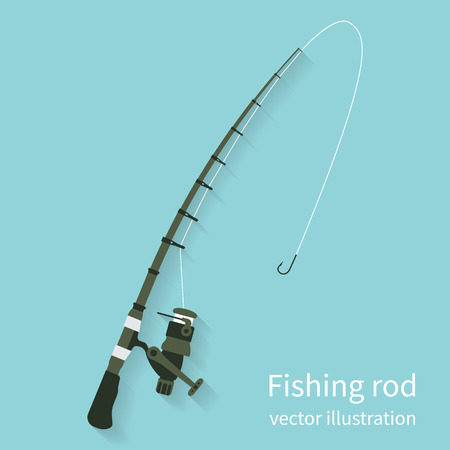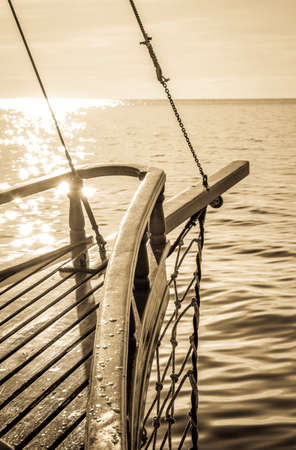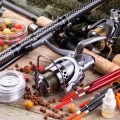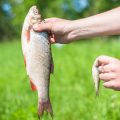Bank Fishing Basics
If you’re hitting the water from the shore, you know bank fishing is all about accessibility, mobility, and making every cast count. Whether you’re working your local city pond or staking out a remote riverbank, having the right gear can make or break your trip. Here’s what every shore-bound angler needs to get started.
Key Gear for Bank Fishing
| Gear | Purpose | Pro Tips |
|---|---|---|
| Medium Spinning Rod & Reel | Versatile for most freshwater species; easy to transport | Go for a two-piece rod for easier carry in your car or backpack |
| Tackle Box or Bag | Keeps lures, hooks, and line organized and handy | Look for waterproof options with adjustable compartments |
| Portable Chair or Stool | Comfort while waiting for bites; saves your back and knees | Lightweight folding chairs are best—some even come with built-in coolers! |
| Landing Net | Makes landing fish easier and safer, especially on rocky banks | Telescoping nets fit easily in a backpack and extend when needed |
| Pliers & Line Cutters | For hook removal, changing rigs, and quick fixes on the go | Choose stainless steel tools to prevent rusting near water |
| Bait Bucket or Cooler | Keeps live bait fresh and beverages cold during long sessions | Aerated buckets are great if you’re using minnows or worms as bait |
| Sunscreen & Bug Spray | Protection against sunburns and pesky mosquitoes or ticks | Toss travel-size bottles into your tackle bag so you never forget them |
| Polarized Sunglasses & Hat | Cuts glare off the water and shields you from the sun’s rays | Sunglasses also help spot fish lurking just below the surface! |
| Stringer or Fish Basket | Keeps your catch secure and fresh until you’re ready to head home | Use a floating stringer if you’re wading in shallow waters |
| Small First Aid Kit | Covers minor cuts, scrapes, and bug bites while outdoors | Pocket-sized kits fit easily into any bag or cargo pocket for emergencies |
Tackle Selection for Every Situation
Your lure choices can make all the difference. For bank fishing in America’s lakes and rivers, try these proven options:
- Soft Plastics: Versatile for bass, panfish, and even trout. Rig them Texas-style to avoid snags in weedy areas.
- Spoons & Spinners: Great for covering water fast and catching active fish near structure like rocks or submerged trees.
- Bobbers & Live Bait: Perfect for beginners or when fishing with kids—watching that bobber dance is always a thrill.
Packing Smart: Accessibility & Comfort Tips
- Keep it light: Use backpacks designed for anglers with rod holders and plenty of pockets.
- Scout ahead: Know your access points—public parks often have paved paths; remote spots might need boots or waders.
- Avoid clutter: Bring only what you’ll use. Extra gear weighs you down when moving between hot spots.
The Shore Advantage: Why Bank Fishing Rocks in the U.S.
No boat? No problem. From urban lakes to winding riverside trails, bank fishing is an American tradition that lets anyone get in on the action without breaking the bank. With the right setup, you’ll be reeling ‘em in before lunch—no dock required.
2. Kayak and Canoe Essentials
If you’re ready to ditch the crowded bank and paddle into those hard-to-reach honey holes, kayak and canoe fishing is where it’s at. But before you launch, having the right gear is key for a safe, efficient, and stealthy day on the water. Here’s what every paddling angler needs to keep close:
Must-Have Gear for Paddling Anglers
| Gear | Why You Need It | Pro Tips |
|---|---|---|
| Compact Tackle Storage | Keeps your gear organized and easy to access in tight spaces. | Look for waterproof, stackable boxes that fit under seats or in hatches. |
| Life Vest (PFD) | Your #1 safety item—required by law in most states. | Choose a fishing-specific PFD with pockets for tools and tackle. |
| Safety Tools | For emergencies and convenience: whistle, knife, first-aid kit, paddle leash. | Attach essentials within arm’s reach; practice using them before heading out. |
| Stealth Accessories | Avoid spooking fish by minimizing noise and movement. | Add anchor trolleys, drift socks, or even a stakeout pole for silent positioning. |
| Dry Bags & Waterproof Cases | Protects electronics, keys, and snacks from splashes or rain. | Stash one under your seat for quick grab-and-go access if you need to beach quickly. |
Paddle-Proof Fishing Setups
The biggest difference between bank and boat fishing? Space is tight, so every piece of gear needs a job. Stick with two rods (max), slim down your tackle selection, and use rod leashes to avoid accidental overboard losses. Mounting a compact fish finder can help you zero in on structure without burning daylight paddling in circles. Bonus points for adding deck pads or rubber mats—these cut down on noise when shifting gear or landing fish.
Quick Safety Reminders for Kayak & Canoe Anglers:
- PFD stays on at all times—no exceptions!
- Tether everything that doesn’t float (including your paddle).
- Keep a weather eye: wind picks up fast on open water, especially in small craft.
- If you’re out before dawn or after dusk, add navigation lights so other boaters can see you.
Stealth Tactics: Silent but Deadly Effective
Paddle quietly with smooth strokes. Avoid banging gear against the hull. When possible, approach spots from downstream or with the wind at your back to sneak up on wary fish. A little preparation goes a long way—rig up lures and leaders ahead of time so you’re not fumbling around when the bite turns on.

3. Bass Boat Arsenal
Essential Gear for Every Bass Boater
If youre serious about bass fishing, having the right setup on your boat isnt just a luxury—its what puts fish in the livewell. Whether youre chasing big largemouths in Texas or smallies up north, your boat is your command center. Lets break down the must-have gear that turns any bass boat into a true fish-catching machine.
High-Tech Electronics: The Eyes Below
Modern bass boats are loaded with electronics that help you find and catch more fish. Heres what you should have onboard:
| Equipment | Purpose | Popular Brands |
|---|---|---|
| Fish Finder/Sonar | Locates fish and underwater structure | Humminbird, Lowrance, Garmin |
| Trolling Motor with GPS | Makes precise boat positioning and spot-locking easy | Minn Kota, MotorGuide |
| Chartplotter | Navigates lakes and marks waypoints | Garmin, Raymarine, Simrad |
| Power Poles/Shallow Water Anchors | Quickly anchor in shallow water without spooking fish | Power-Pole, Minn Kota Talon |
Rod Management: Stay Organized, Fish Efficiently
Bass fishing means switching techniques fast. Having your rods organized saves time and frustration. Look for these onboard solutions:
- Rod Lockers: Built-in storage to keep rods safe while running across the lake.
- Deck Rod Straps: Secure rods on the deck for quick access between casts.
- Vertical Rod Holders: Keep extra setups handy without cluttering the deck.
Tackle Storage and Onboard Organization
A cluttered boat is a recipe for lost gear and missed bites. Set yourself up for success with smart storage solutions:
- Tackle Trays: Stackable boxes (like Plano 3700s) fit perfectly in most bass boat compartments.
- Lure Organizers: Dedicated slots for crankbaits, spinnerbaits, and jigs keep everything untangled and ready to roll.
- Cup Holders & Tool Racks: Little things matter—keep pliers, scissors, and drinks close at hand.
- Cull Systems & Livewell Accessories: For tournament anglers, these make keeping track of your best five a breeze.
Bass Boat Must-Have Checklist
| Gear Category | Why You Need It |
|---|---|
| Electronics (Fish Finder, GPS) | Find more fish & navigate safely |
| Trolling Motor w/ Spot-Lock | Hold your position in wind or current hands-free |
| Rod Management System | Quick rod changes and safe storage on the move |
| Tackle Storage Trays & Organizers | No more digging around for your favorite bait |
| Pliers/Scissors Rack & Cup Holders | The little conveniences that add up over a day on the water |
| Cull Tags & Livewell Management Tools (for tournaments) | Easier fish management when every ounce counts |
This gear forms the backbone of any bass boaters arsenal—get it dialed in, and youll spend less time fumbling with gear and more time setting hooks.
4. Saltwater and Offshore Setups
If you’re ready to trade the calm of lakes for the wild blue yonder, saltwater fishing is where things get real. Offshore and saltwater locations throw big challenges your way—think strong currents, unpredictable waves, and fish with serious attitude. The gear you pick needs to be up for the job, and there’s no room for half-measures here.
Heavy-Duty Rods and Reels
Saltwater fish like tuna, red snapper, or marlin aren’t going to give up easy. You need rods built tough—look for graphite or composite blanks that can handle heavy loads. Pair your rod with a reel designed for salt action: sealed bearings, corrosion-resistant materials (think aluminum or stainless steel), and plenty of line capacity are all must-haves.
| Gear | Why It Matters |
|---|---|
| Heavy-Duty Rod (7-9 ft) | Handles bigger fish and rougher seas without snapping under pressure |
| Saltwater Reel (High Drag) | Corrosion resistance and high drag power keep you in control during long fights |
| Braided Line (30-80 lb test) | Extra strength for battling large species; less stretch means better hooksets |
Tackle That Can Take a Beating
Forget your lightweight freshwater jigs. Out here, you’ll want sturdy terminal tackle—think circle hooks, heavy leaders (fluorocarbon or wire), big sinkers, and lures that mimic local baitfish but can take a pounding from toothy predators. Stainless steel swivels and snaps are non-negotiable if you don’t want your line snapped by the first hard run.
Offshore Tackle Box Must-Haves:
- Circle hooks (sizes 5/0–9/0)
- Wire or 80+ lb fluorocarbon leaders
- Pyramid sinkers (2–8 oz)
- Large popping plugs & spoons
- Heavy-duty pliers & cutters
Safety Gear for Deeper Waters
No matter how experienced you are, offshore fishing brings its own risks. Always wear a U.S. Coast Guard-approved life jacket when on deck—rogue waves don’t care how good a swimmer you are. A VHF marine radio is key for emergencies (cell phones don’t always get signal offshore). Add a solid first aid kit, sun protection (UPF shirt, wide-brim hat), and plenty of water—you’ll need it out in the glare.
| Safety Gear | Purpose |
|---|---|
| Life Jacket (Coast Guard Approved) | Keeps you afloat in case of man overboard situations |
| VHF Radio | Reliable communication for emergencies far from shore |
| Sunscreen & UPF Clothing | Protects against intense sun exposure on open water |
| First Aid Kit & Hydration Supplies | Covers minor injuries and keeps you hydrated in harsh conditions |
Pro Tip:
If you’re new to offshore runs, double-check weather conditions before leaving the dock—storms build fast on open water. And always let someone know your float plan.
5. Urban Waterways Tactics
Fishing in the city is a whole different game compared to rural rivers or wide-open lakes. Urban waterways—think canals, ponds, and river stretches running through concrete jungles—demand specialized gear that’s both stealthy and portable. Let’s break down what you need to be ready for the unexpected twists of city fishing.
Compact Setups for Tight Spaces
Space is always at a premium in urban spots. You might find yourself casting from a crowded dock, a narrow canal edge, or even between parked cars. Here’s what works best:
| Gear | Why It Matters |
|---|---|
| Telescopic Rods | Packs down small; easy to carry on subways or bikes. |
| Travel-Size Reels | Lightweight and fits in any backpack. |
| Slim Tackle Boxes | Keeps your lures organized without weighing you down. |
Packable Gear for On-the-Go Anglers
City anglers need to move fast—sometimes dodging foot traffic or hopping fences just to reach a good spot. That means gear should be both durable and easy to pack up in seconds.
- Foldable nets: Stash them in your bag until you hook something worth landing.
- Pocket multitools: Pliers, line cutters, and hook removers all in one handy gadget.
- Collapsible buckets: Perfect for carrying bait or water, then folding flat when not needed.
Navigating City Rules and Surprises
Urban fishing brings its own set of curveballs—strange local regulations, sudden patrols, or unexpected encounters with curious bystanders. Be prepared with these essentials:
| Tool/Item | Urban Fishing Role |
|---|---|
| Fishing license (digital copy) | Avoid fines if asked by city officials. |
| Litter bags | Keep your spot clean and avoid trouble with locals. |
| ID & small first aid kit | You never know what you’ll step on—or into—in the city! |
Tough Tips for Urban Anglers
- Stay mobile: Don’t bring more than you can carry comfortably—urban fishing often means walking long distances.
- Blend in: Dress casual; sometimes it’s better not to draw too much attention with flashy gear.
- Scout ahead: Use Google Maps or local forums to find promising access points before heading out.
6. Seasonal and Regional Must-Haves
When it comes to fishing in the U.S., every region—and every season—throws its own curveballs at you. Whether you’re flipping jigs for largemouth in Florida or swinging steelhead in Oregon, your gear has to keep up. Here’s how to adapt your arsenal for American waters all year round.
Adapting Your Clothing: Stay Comfortable, Stay Fishing
Weather can make or break your trip. Layering is the name of the game. In the Northeast, spring mornings bite with cold, so pack a good base layer and a waterproof shell. Down South? Lightweight, moisture-wicking shirts and a wide-brim hat are your best friends when humidity hits hard. Out West, don’t forget a windbreaker—the breeze off big lakes gets chilly fast.
| Region | Spring/Fall | Summer | Winter |
|---|---|---|---|
| Northeast | Insulated jacket, rain gear | Breathable long-sleeve shirt, cap | Thermal layers, heavy gloves |
| Southeast | Light hoodie, sun gaiter | T-shirt, fishing shorts, sun gloves | Windbreaker, fleece pullover |
| Midwest | Hooded sweatshirt, waders | Polo shirt, quick-dry pants | Down jacket, wool socks |
| West Coast | Softshell jacket, beanie | UV-blocking shirt, sunglasses | Parka, thermal base layer |
Bait and Lure Swaps: Follow the Bite Year-Round
No single bait works everywhere or every time of year. Spring means pre-spawn bass love jerkbaits and spinnerbaits in muddy waters. Summer? Topwater frogs and soft plastics get smashed at sunrise and sunset. Come fall, crankbaits and jigs excel as fish bulk up for winter. And don’t forget ice fishing—jigging spoons and live minnows are classics under the hardwater.
| Season | Bait/Lure Types |
|---|---|
| Spring (Spawn) | Scented plastics, suspending jerkbaits, live worms |
| Summer (Active) | Topwater lures, spinnerbaits, frogs, cut bait for catfish |
| Fall (Feeding Up) | Lipless crankbaits, jigs with craw trailers, large swimbaits |
| Winter (Slow Bites) | Iced jigs/spoons, live minnows/waxworms (ice fishing), slow-rolled blade baits |
Gear Adjustments: The Right Tools for Every Spot and Season
Your rod-and-reel combo should fit both the region and the time of year. Heading to Rocky Mountain streams? A 5-weight fly rod is king for trout most months—but switch to an 8-weight if salmon are running. Chasing redfish on the Gulf Coast flats? Medium-action spinning gear with braid gives you casting distance in windy conditions.
| Location Type | Main Target Species | Recommended Gear Setup |
|---|---|---|
| Lakes (Midwest) | Bass, Walleye, Pike | Medium-heavy spinning/casting rod (6’6”-7’), 10-15lb mono/fluoro line |
| Rivers (Northeast/West) | Trout, Salmon, Steelhead | 7-9ft medium/light spinning or fly rod; 4-8lb test line/fly backing |
| Saltwater Flats (Southeast/Gulf) | Redfish, Snook, Sea Trout | 7ft medium-fast action spinning rod; 10-20lb braid mainline |
| Piers/Shoreline (Nationwide) | Panfish, Catfish | 6ft light-action rod; 6-10lb test line |
| Ice Fishing (Northern States) | Panfish, Walleye | 24-36in ice rod; 2-8lb mono or braid |
Tackle Tip:
If you’re road-tripping across states or planning to hit different types of water this season, pack modular tackle trays. Swap out lures and rigs based on what’s biting in each region—don’t haul what you won’t use!
The Takeaway:
The right clothing keeps you comfortable no matter where you wet a line. Smart bait swaps mean more bites as the seasons change. And matching your gear setup to each location gives you a shot at trophy fish coast-to-coast. Stay adaptable—America’s waters are always changing their rules.


